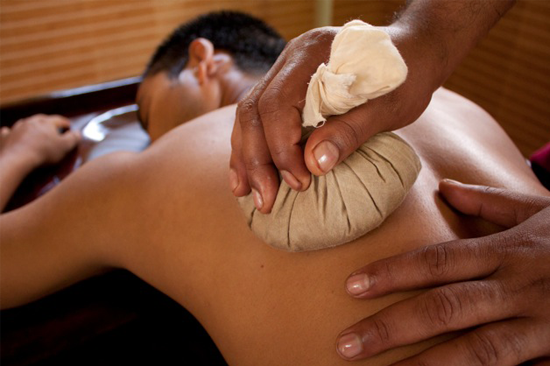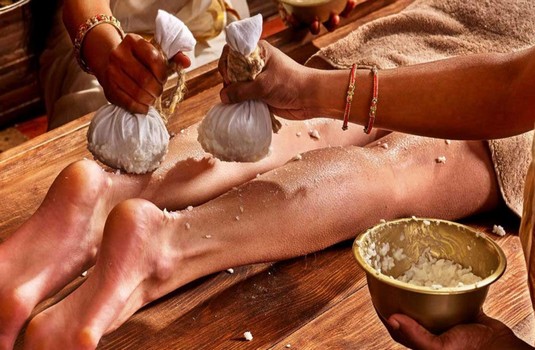Ask Ayurvedic doctor a question and get a consultation online on the problem of your concern in a free or paid mode. More than 2,000 experienced doctors work and wait for your questions on our site and help users to solve their health problems every day.
Shop Now in Our Store
Pakshaghata Chikitsa – Ayurvedic Strategies for Hemiplegia & Neuromuscular Rehabilitation

Introduction to Pakshaghata Chikitsa
Pakshaghata Chikitsa is a specialized branch of Ayurvedic medicine dedicated to addressing conditions such as hemiplegia, paralysis, and neuromuscular imbalances. This holistic therapy focuses on restoring the balance of doshas—particularly Vata—and revitalizing neural and muscular functions. By integrating pakshaghata chikitsa into a comprehensive treatment plan, individuals can work towards regaining mobility, improving coordination, and enhancing overall quality of life.
Historical Roots & Ayurvedic Significance
Ancient Ayurvedic texts have long recognized the condition of Pakshaghata as a manifestation of aggravated Vata dosha, often resulting from an imbalance that affects one side of the body. Pakshaghata chikitsa has traditionally been employed to mitigate the effects of stroke and paralysis through a combination of detoxification therapies, herbal formulations, and rejuvenative treatments. Its enduring significance lies in its ability to address both the symptoms and the underlying doshic disturbances, paving the way for holistic recovery.
Key Components & Therapeutic Benefits
Herbal & Therapeutic Composition
Pakshaghata chikitsa incorporates a blend of potent herbs and time-tested therapies designed to soothe and balance the nervous system:
- Vata-Pacifying Herbs: Ingredients like Ashwagandha, Bala, and Jatamansi help calm the nervous system and promote nerve regeneration.
- Detoxification Therapies: Procedures such as Snehana (oleation), Swedana (fomentation), and Vasti (medicated enemas) are critical in eliminating accumulated toxins and balancing Vata.
- Rehabilitative Measures: Techniques including tailored massage, yoga, and physiotherapy support neuromuscular rehabilitation and enhance recovery.
Therapeutic Benefits
When administered at the optimal pakshaghata chikitsa dosage and protocol, this therapy can:
- Reduce paralysis and improve motor functions.
- Enhance neural regeneration and stimulate blood circulation.
- Alleviate muscle stiffness and restore coordination.
- Support the detoxification process, thereby reducing the burden of accumulated ama (toxins).
- Promote overall physical strength and mental clarity through a balanced dosha state.
How Pakshaghata Chikitsa Works: The Science Behind the Therapy
The success of pakshaghata chikitsa is rooted in its multifaceted approach to healing. By pacifying the aggravated Vata dosha, the therapy minimizes erratic nerve impulses that contribute to paralysis. The use of detoxification methods like Vasti aids in flushing out toxins, while oleation and fomentation therapies help in softening and lubricating the tissues. Combined with rehabilitative exercises, these interventions stimulate neural pathways and muscle recovery, supporting long-term neuromuscular regeneration and balance.
Choosing the Right Ayurvedic Approach
When considering pakshaghata chikitsa as part of your recovery regimen, keep these essential guidelines in mind:
- Consult Certified Ayurvedic Practitioners: Personalized assessments are crucial to determine your unique dosha imbalances and to design a tailored treatment plan.
- Adopt a Holistic Treatment Protocol: A combination of herbal remedies, detoxification therapies, and rehabilitative exercises is key to effective recovery.
- Source High-Quality Ingredients: Ensure that herbal formulations and therapeutic preparations are made from organic, authentic ingredients for optimal results.
Recommended Treatment & Dosage
Adhering to the correct pakshaghata chikitsa regimen is vital for achieving optimal outcomes:
- Customized Dosage: The exact dosage and combination of therapies will vary based on individual health status, the severity of the condition, and practitioner recommendations.
- Administration Protocols: Treatments often begin with detoxification therapies such as Snehana and Vasti, followed by herbal regimens and supportive physiotherapy.
- Regular Monitoring: Continuous assessment and adjustment of the treatment protocol are essential to match the progress of recovery and to ensure that the therapeutic interventions remain effective.
Potential Side Effects & Precautions
While pakshaghata chikitsa is designed to be a safe and holistic approach, it is important to observe certain precautions:
- Initial Reactions: Some individuals may experience temporary discomfort or mild digestive disturbances as the body adjusts to detoxification therapies.
- Allergic Sensitivities: In rare cases, herbal components may trigger allergic reactions. Discontinue use and consult your practitioner if any adverse effects occur.
- Professional Supervision: Always undergo pakshaghata chikitsa under the close guidance of an experienced Ayurvedic practitioner to ensure safety and efficacy.
Frequently Asked Questions
What is pakshaghata chikitsa and who can benefit from it?
Pakshaghata chikitsa is an Ayurvedic treatment focused on managing conditions like hemiplegia and paralysis. It benefits individuals suffering from neuromuscular imbalances, especially those with stroke-induced paralysis or related issues.
How does pakshaghata chikitsa help in neurological recovery?
By pacifying aggravated Vata dosha and employing detoxification therapies such as Snehana, Swedana, and Vasti, pakshaghata chikitsa supports neural regeneration, improves circulation, and restores motor functions.
What are the key therapies used in pakshaghata chikitsa?
The treatment combines Vata-pacifying herbs, detoxification procedures (Snehana, Swedana, Vasti), and rehabilitative exercises including targeted massage and yoga to enhance neuromuscular recovery.
Is pakshaghata chikitsa a standalone treatment or part of a comprehensive program?
It is best utilized as part of a comprehensive Ayurvedic treatment program that includes dietary modifications, herbal remedies, detoxification therapies, and rehabilitative measures to ensure holistic recovery.
How long does it take to see improvements with pakshaghata chikitsa?
The recovery timeline varies by individual. With consistent application of the treatment protocol, many patients begin to notice improvements in motor functions and overall well-being within a few weeks to several months.
Are there any risks associated with pakshaghata chikitsa?
When administered under proper guidance, pakshaghata chikitsa is generally safe. However, close monitoring is necessary to adjust treatments if any adverse effects occur, especially during the initial detoxification phase.
Where can I receive authentic pakshaghata chikitsa treatment?
Authentic pakshaghata chikitsa should be administered by certified Ayurvedic practitioners at reputable Ayurvedic centers or clinics that specialize in neurological and rehabilitative therapies.
Conclusion & Expert Insights
Pakshaghata chikitsa represents a holistic Ayurvedic approach to addressing hemiplegia and neuromuscular imbalances by restoring the natural balance of doshas and promoting neural regeneration. Through personalized treatment protocols that integrate detoxification, herbal therapies, and rehabilitative practices, this therapy offers hope for improved mobility and overall well-being. For the best outcomes, it is essential to pursue pakshaghata chikitsa under the guidance of a qualified Ayurvedic practitioner, ensuring that each step of the treatment is tailored to your individual needs.
References & Further Reading
- Sharma, P.V. Ayurvedic Healing: A Comprehensive Guide.
- Lad, V. Ayurveda: The Science of Self-Healing.
- National Institute of Ayurveda –
- Journal of Ayurveda and Integrative Medicine for further research on neurological rehabilitation and Ayurvedic detoxification therapies.
This article is checked by the current qualified Dr Sujal Patil and can be considered a reliable source of information for users of the site.



